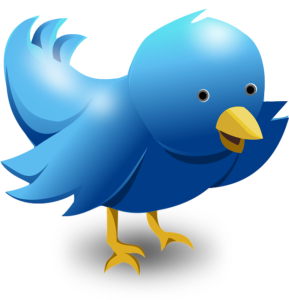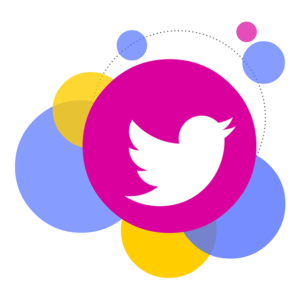Claire Saxton’s Social Media Basics – Twitter
 Twitter is one of those social media channels that most people will say that you need a strong presence on for your small business to be successful. So, you sit down, and you create a profile and follow a few people… and nothing happens. You follow a few more, write a few tweets about what you do and wait some more… still no results.
Twitter is one of those social media channels that most people will say that you need a strong presence on for your small business to be successful. So, you sit down, and you create a profile and follow a few people… and nothing happens. You follow a few more, write a few tweets about what you do and wait some more… still no results.
Many of my clients have turned to me in frustration at not being able to make Twitter ‘work’ for them. There are a few reasons why this might be the case:
• not understanding how Twitter works
• not setting up their profile correctly
• not interacting and engaging with other Twitter users
• using Twitter to ‘sell’ rather than to connect with people
• simply not having the time to sit down and master the art of using Twitter
And it is something of an art. While you need a strategy and marketing plan in place to make the most out of your Twitter account, sometimes it’s the strangest and most unlikely of tweets that will go viral.
Here’s my essential guide to using Twitter for your small business
 Start things off right by setting your profile up correctly
Start things off right by setting your profile up correctly
Unfortunately, filling out your name and adding your website isn’t enough for a profile when it comes to using Twitter for marketing your business. Twitter is like a search engine (and it works brilliantly with Google too), so you need to be thinking about those ‘keywords’ your target audience will be looking for to find you and your products or services.
It’s true that people do business with people, and so it’s important to get your personality across on social media. I’d say this is particularly the case with Twitter where the feed changes so quickly that once someone has stopped to look at your profile – you need to keep their attention as long as possible. Add a photograph of yourself for that personal touch.
The photo you choose for Twitter (and your other social media accounts) should be as professional as possible. That doesn’t mean you have to go for a professional photography session in a studio, but try to make sure there’s a plain background behind you, and you’re dressed how you normally would be for work.
 Another thing to consider with your profile is your business branding
Another thing to consider with your profile is your business branding
When you are your business, it’s important that you’re consistent across all social media platforms, as well as your website and printed marketing materials. Social media is about repetition and helping people remember who you are, and what you do. Ensuring that you use the same colours as your logo and website across your social media marketing will make it a lot easier for people to recognise that it’s you.
Using social media for marketing is about building relationships
It’s a reputation building form of marketing that enhances your credibility and authority as an expert in your industry. That means the last thing you want to be doing is constantly selling at your followers.
A ratio of 80/20 social posts to advertising works best for most small businesses. The ‘social’ posts are anything that your followers can interact and engage with, like:
• asking questions about hot topics
• getting to know your followers and what they do
• sharing images from your workday
• retweeting the tweets of others you think your audience will find valuable
A quick and easy way to achieve this is by checking out the trending hashtags each day and joining in with any conversations that are relevant to you, or your business!
 The aim of using Twitter for marketing is always to form new relationships and build existing ones, it’s not about lead generation. Make an effort to retweet and like fellow businesses as this is how you build relationships and get remembered for the right reasons.
The aim of using Twitter for marketing is always to form new relationships and build existing ones, it’s not about lead generation. Make an effort to retweet and like fellow businesses as this is how you build relationships and get remembered for the right reasons.
Content curation is a great way to add value to your Twitter feed
It can be tricky getting enough content together of your own to post regularly on Twitter (and I suggest at least 3 times a day for best results). This is where content curation becomes your friend and makes it easy to have a ready supply of blogs and articles to share.
Put simply, it’s curating the content of others that your target audience will find interesting. So, anything you come across on the internet that you think will interest your audience, they’ll find value from or reinforces your brand message is what you’re looking to be sharing.
Always tag in the original writer or business wherever possible. Not only does this ensure that credit goes where it’s due, but it also helps you get in front of their audience which is likely to be a similar demographic to yours. Asking a question or for thoughts on the shared content is a great way to get a conversation started with your followers and other Twitter users.
 Sometimes you need to stand out from the crowd on Twitter
Sometimes you need to stand out from the crowd on Twitter
There are a lot of people using Twitter and a lot of business owners just like you trying to reach the same people and pitch the same products and services. So, what can you do to stand out from the crowd and make a strong impression on your audience?
Using images with every post is a good idea as it draws the eye from a cluttered Twitter feed to your own tweet, but why not take it a step further and use video instead? Short videos, around a minute or less, are a great way for you to talk directly to the people you want to be forming relationships with.
For an added bonus to your search engine optimisation, host your videos on YouTube (with appropriate keywords in the description and links back to your website) and embed them on Twitter. As YouTube is owned by Google, this will help your search engine rankings and keeps your videos together on one channel for your followers to find easily.
It’s not about the numbers with Twitter but making valuable connections
 Yes, followers count. Some people will use them as the basis for determining how ‘reliable’ others think you are. But, that doesn’t mean having hundreds of followers will give you instant success. If they don’t belong to your target audience or their audience is a completely different demographic, having high numbers won’t make much difference (and this is why buying followers is a bad idea).
Yes, followers count. Some people will use them as the basis for determining how ‘reliable’ others think you are. But, that doesn’t mean having hundreds of followers will give you instant success. If they don’t belong to your target audience or their audience is a completely different demographic, having high numbers won’t make much difference (and this is why buying followers is a bad idea).
How do you find the right people to follow then?
Well, joining in the Twitter hours (sometimes called hashtag hours) is a great place to start. Most industries have their own along with the more generic lunchtime and local hours that you can join in with. Look out for the people joining in and engaging with the conversation live rather than those that have clearly scheduled advertising posts in advance. Say hello, give them a hello and find out more about them and what they do.
Do follow people back that follow you, but make sure they’re not a spam account – once you follow a spambot you’ll be plagued with false accounts and spam tweets until you’ve blocked them all (and things snowball very quickly!)
My last piece of advice on getting started well with Twitter is to join in with the weekly awards like #sbs – Small Business Sunday set up by Theo Paphitis to help small business owners get noticed online. A lot of people are engaging with these self-nomination threads every Sunday, so they are a great way to get in front of your target audience, and if you’re picked as a winner, then the award is an instant boost to your credibility and reputation.



Leave a Reply
Want to join the discussion?Feel free to contribute!